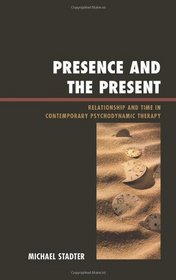Search -
Presence and the Present: Relationship and Time in Contemporary Psychodynamic Therapy (The Library of Object Relations)
Presence and the Present Relationship and Time in Contemporary Psychodynamic Therapy - The Library of Object Relations
Author:
.cs7CED571B{text-align:left;text-indent:0pt;padding:0pt 0pt 0pt 0pt;margin:0pt 0pt 0pt 0pt} .csA62DFD6A{color:#000000;background-color:transparent;font-family:Times New Roman; font-size:12pt; font-weight:normal; font-style:italic; } .cs5EFED22F{color:#000000;background-color:transparent;font-family:Times New Roman; font-size:12pt; font-wei... more »
Author:
.cs7CED571B{text-align:left;text-indent:0pt;padding:0pt 0pt 0pt 0pt;margin:0pt 0pt 0pt 0pt} .csA62DFD6A{color:#000000;background-color:transparent;font-family:Times New Roman; font-size:12pt; font-weight:normal; font-style:italic; } .cs5EFED22F{color:#000000;background-color:transparent;font-family:Times New Roman; font-size:12pt; font-wei... more »
ISBN-13: 9780765706553
ISBN-10: 0765706555
Publication Date: 12/1/2011
Pages: 268
Rating: ?
ISBN-10: 0765706555
Publication Date: 12/1/2011
Pages: 268
Rating: ?
0 stars, based on 0 rating
Publisher: Jason Aronson, Inc.
Book Type: Hardcover
Members Wishing: 0
Reviews: Amazon | Write a Review
Book Type: Hardcover
Members Wishing: 0
Reviews: Amazon | Write a Review
Genres:




